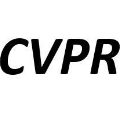Referring video object segmentation (RVOS) relies on natural language expressions to segment target objects in video, emphasizing modeling dense text-video relations. The current RVOS methods typically use independently pre-trained vision and language models as backbones, resulting in a significant domain gap between video and text. In cross-modal feature interaction, text features are only used as query initialization and do not fully utilize important information in the text. In this work, we propose using frozen pre-trained vision-language models (VLM) as backbones, with a specific emphasis on enhancing cross-modal feature interaction. Firstly, we use frozen convolutional CLIP backbone to generate feature-aligned vision and text features, alleviating the issue of domain gap and reducing training costs. Secondly, we add more cross-modal feature fusion in the pipeline to enhance the utilization of multi-modal information. Furthermore, we propose a novel video query initialization method to generate higher quality video queries. Without bells and whistles, our method achieved 51.5 J&F on the MeViS test set and ranked 3rd place for MeViS Track in CVPR 2024 PVUW workshop: Motion Expression guided Video Segmentation.
翻译:暂无翻译



